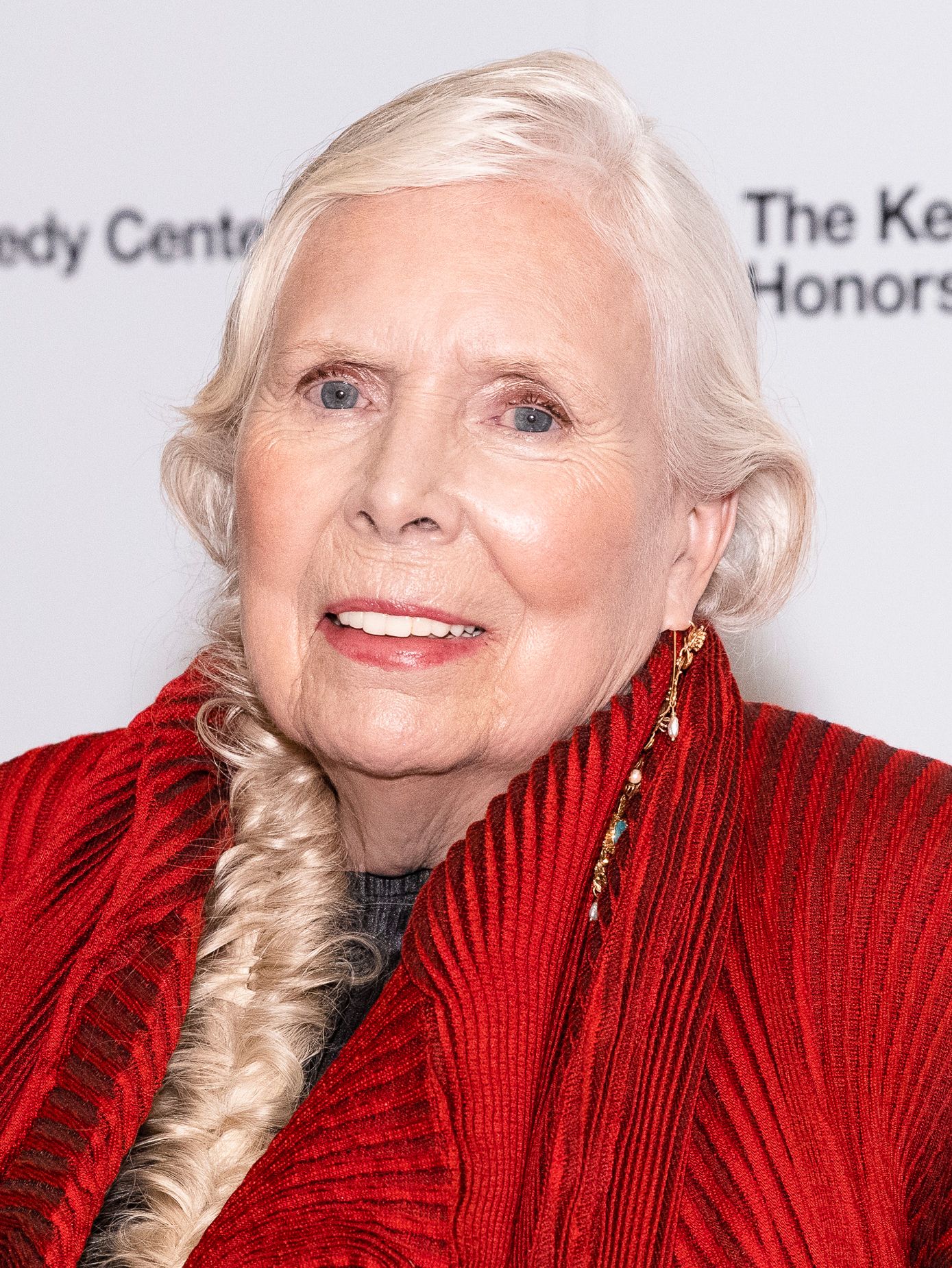Women's History Month intends to honor, inspire, educate, unite and promote women in the face of forces intent on subjugating and silencing them. It is about those who overcame overt and imbedded assumptions and prejudice to be their best selves. RGB said it well:
“I ask no favor for my sex. All I ask of our brethren is that they take their feet off our necks.”
DAY 30: JONI MITCHELL

(2021 Kennedy Center Honors)
Artists are categorized for the sake of corporate marketing. Joni. the complete Joni, has never fit in that kind of a box. There needs to be Joni Mitchell box unto herself. She is always curious, leans into whatever intrigues her, and boldly conveys what many of us can't find words for.
It started when a sixth grade teacher saw her expressive paintings. "If you can paint so beautifully with a brush, you can paint with words," he told her. That led to capturing poetry, and eventually lyrics, as she sang in her small Canadian town.
Desires to escape the limitations around her compelled a move to New York City. That enabled three life-changing events to occur. The first was when one of her idols, Judy Collins, was impressed by her songs and asked Joni to write something for her. "Both Sides Now" became the standard by which most people remember Judy, and gave Joni recognition as a songwriter.
The second was hearing Bob Dylan perform. His personal narrative style gave Joni encouragement to write the same, and it's a trademark she is always associated with.
The final was having David Crosby see her perform. He was so taken aback by her poetic style that he encouraged her to move to California. Surrounded by the artistic diversity of Laurel Canyon and burgeoning folk rock sound, Joni's unique sound captured the hearts of many. Some of that was imbedded in her unique guitar tuning, done to a chord. It reflected her artistic style, and compensated for a weak left hand. Musicians like Steven Stills and Eric Clapton sat mesmerized at they listened to her perform. If Joni had borrowed your guitar, it was known that you'd have to retune it, for her setup was like no other.
Nobody was or will ever be like Joni. Her releases mirrored her life over time. Her paintings graced her covers. When Graham Nash proposed to her, she reflected on the entrapment and disillusionment her grandmothers had expressed over not realizing their true artistic potentials after getting married, and knew she couldn't commit to the same.
She was not at the Woodstock Music Festival because of a television commitment. That didn't keep her from writing the definitive song of the event and of the peace movement about it, based on what other artists told her and the television coverage she saw.
The following year, she quelled a riotous mob scene of 600,000 at the Isle of Wight Festival, demanding that they respect the artists and each other. The crowd settled, enjoyed her performance, and called her back for two encores.
She responded to the political oppression of the seventies by channeling per pain into Blue, considered one of her finest works. Later came The Hissing of Summer Lawns, a strong work about feminism, and Doe Eat Dog about the Reagan era. In between, the double platinum Court And Spark infused jazz and world music rhythms that she would enjoy for a number of years.
But Joni was not jazz, folk, rock, blues, or any other specific genre.
"I'm a composer," she would say, "and like my paintings, each composition reflects the time and influences of my life."
I admire Joni for remaining true to herself against all of the forces wanting to categorize her.
Earlier this year, I was at a fundraising concert where 82 year old Joni appeared, singing Both Sides Now.
While Joni sang, the men and women around me reverently listened. Twenty and thirty somethings were opening browsers to find out more about who this amazing woman was. Some tears were shed, because it was Joni, singing another personal narrative song that we all felt in our hearts and minds.